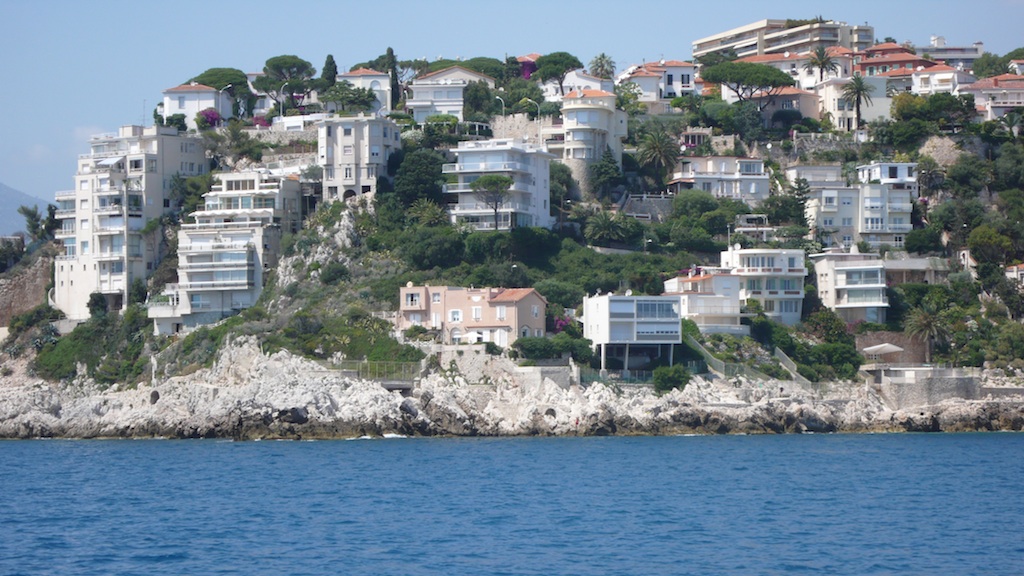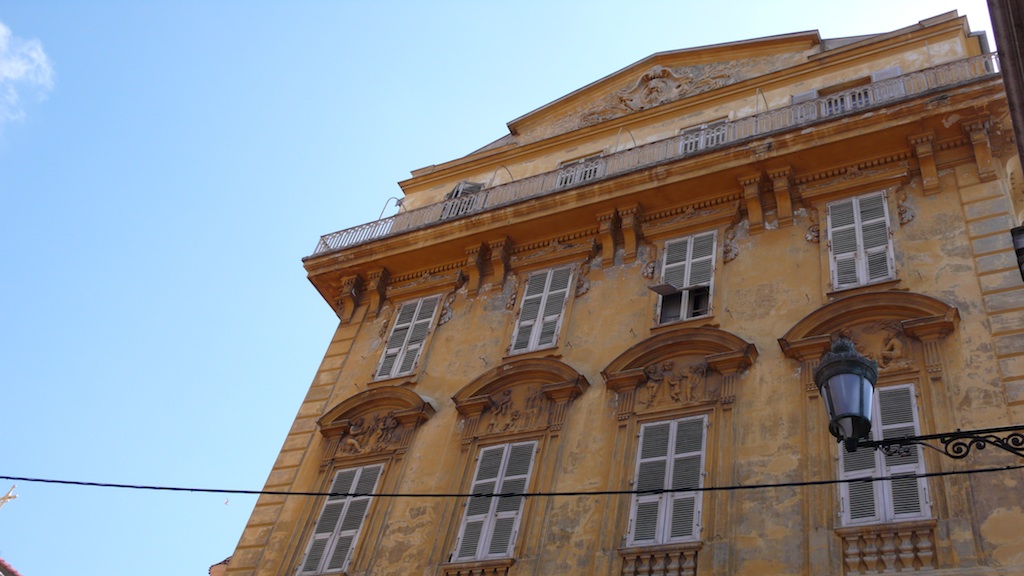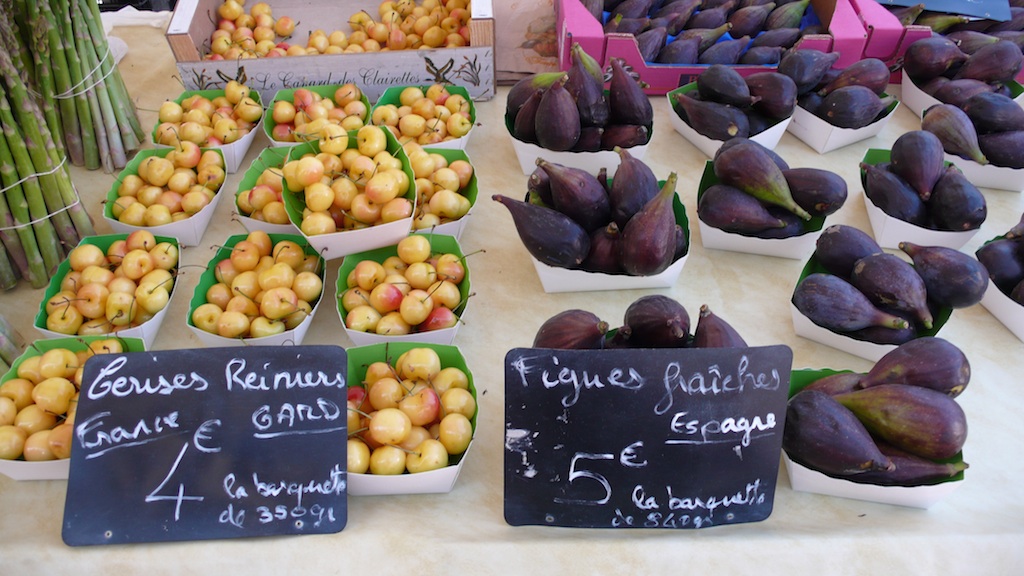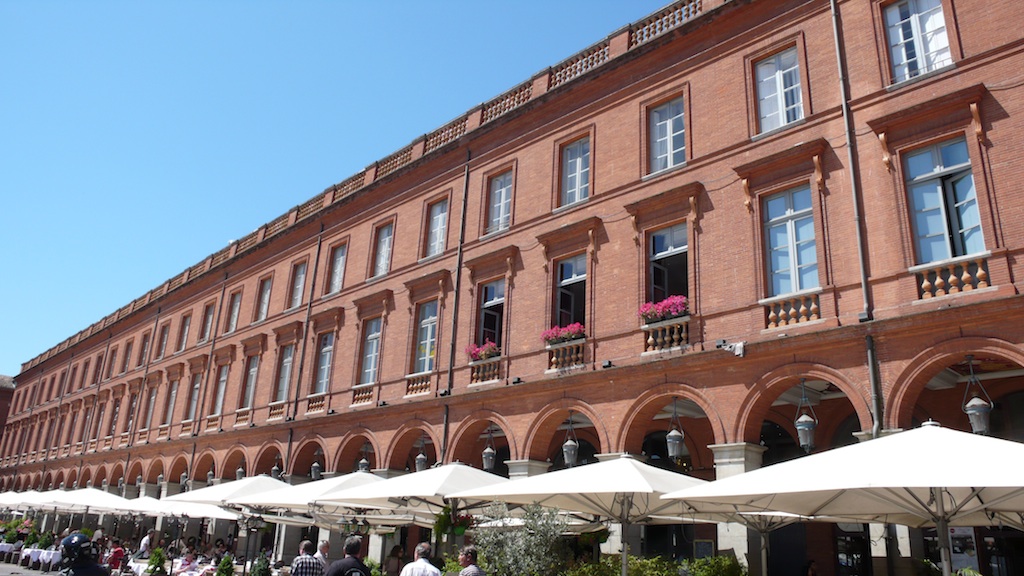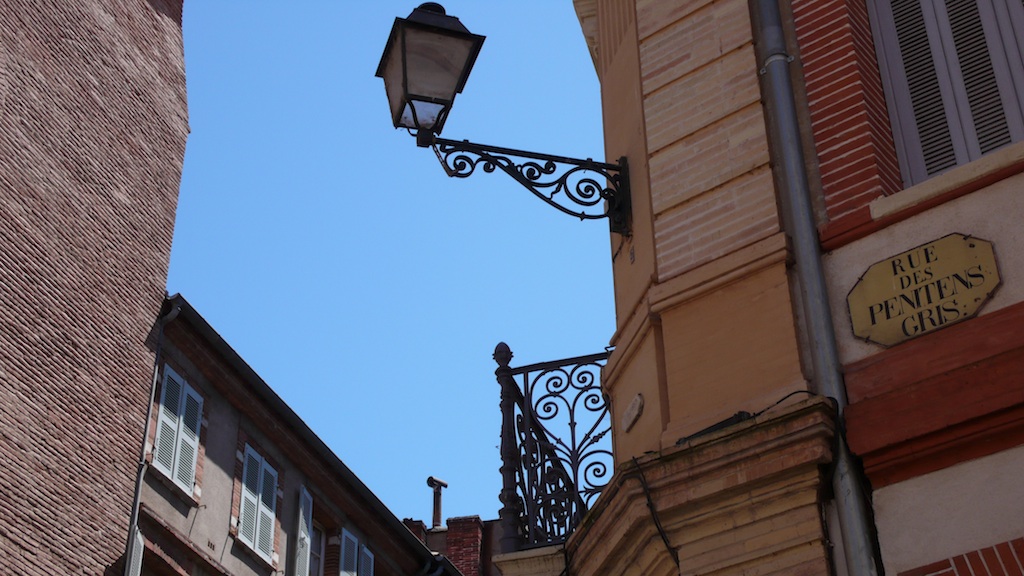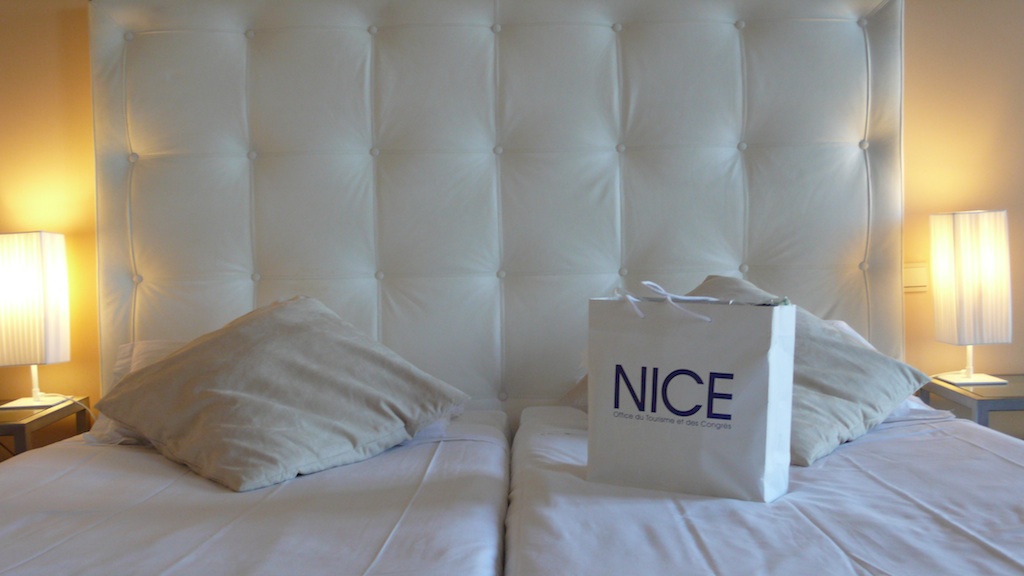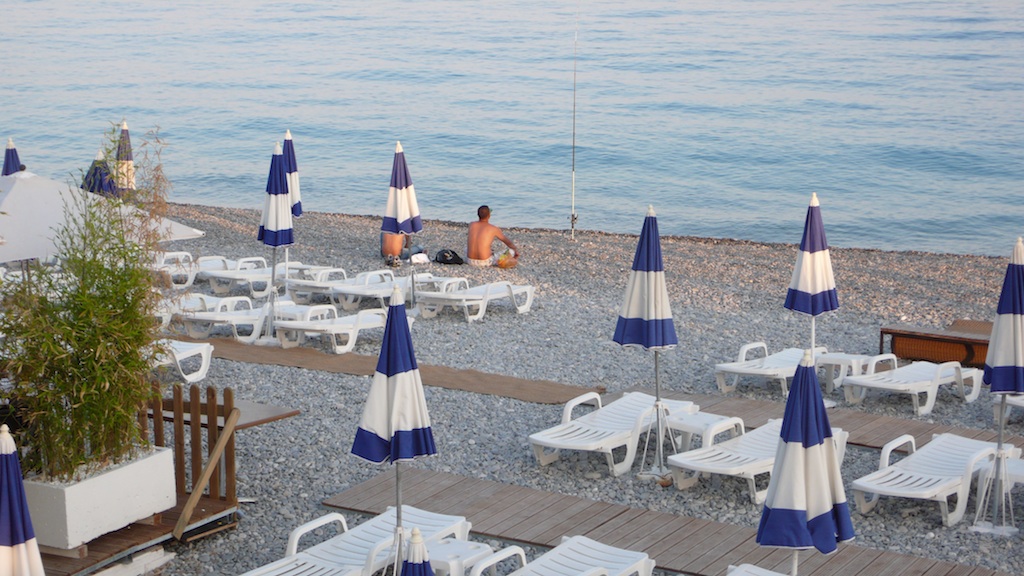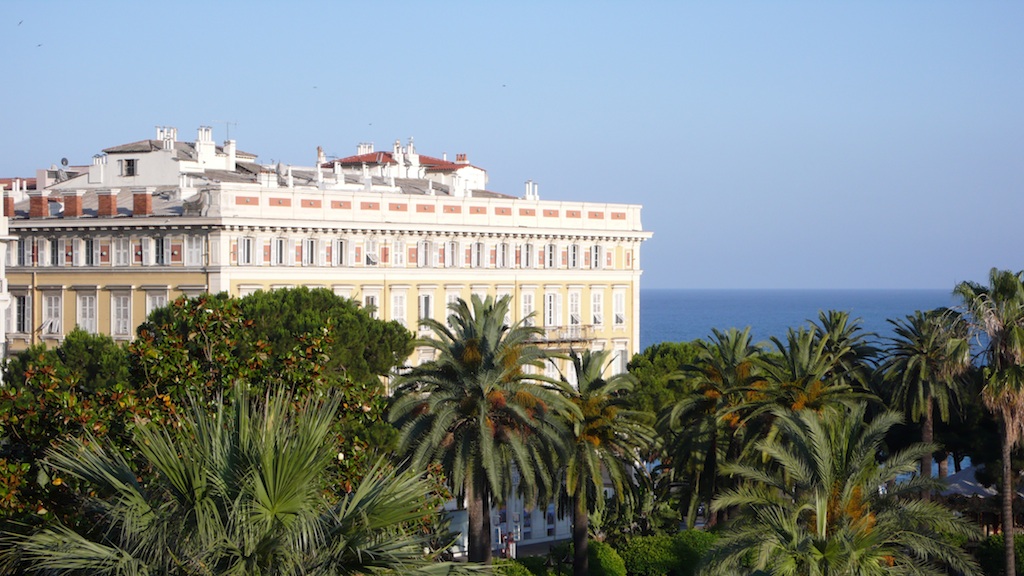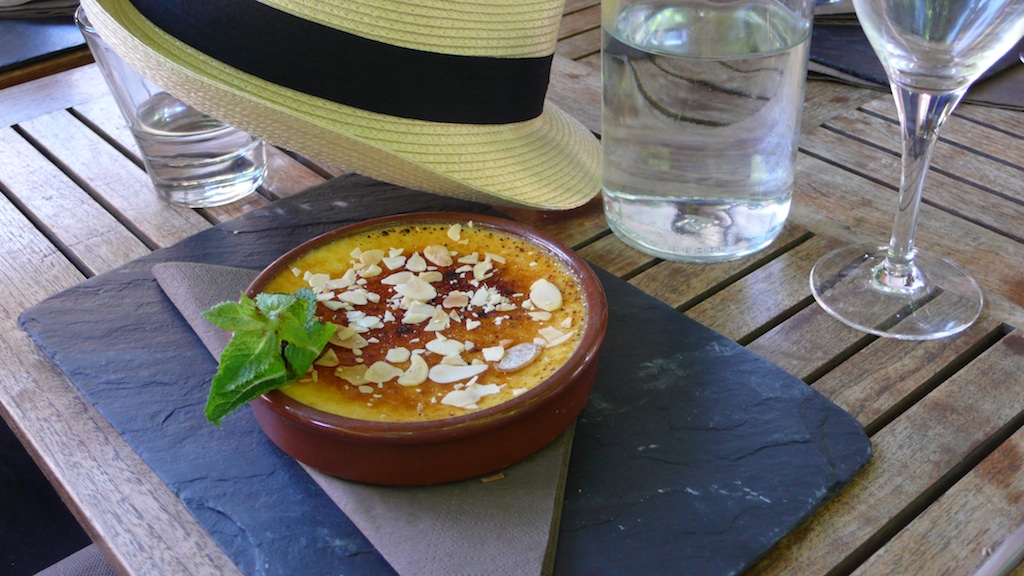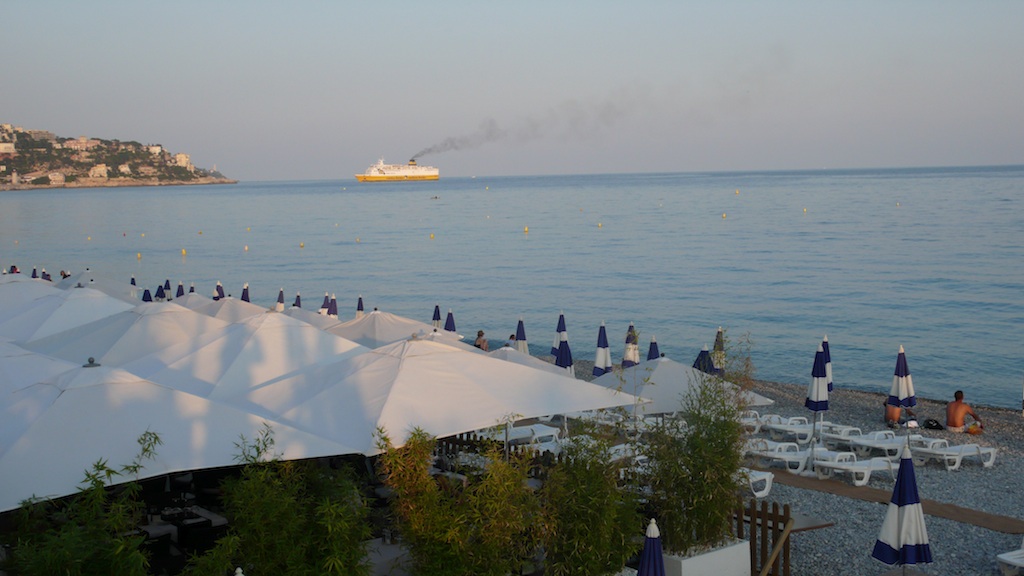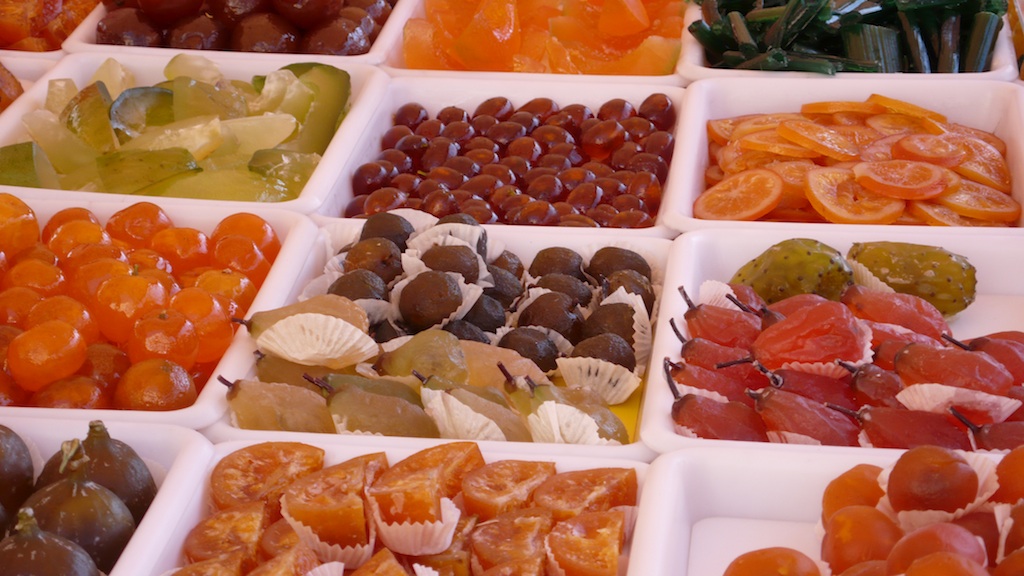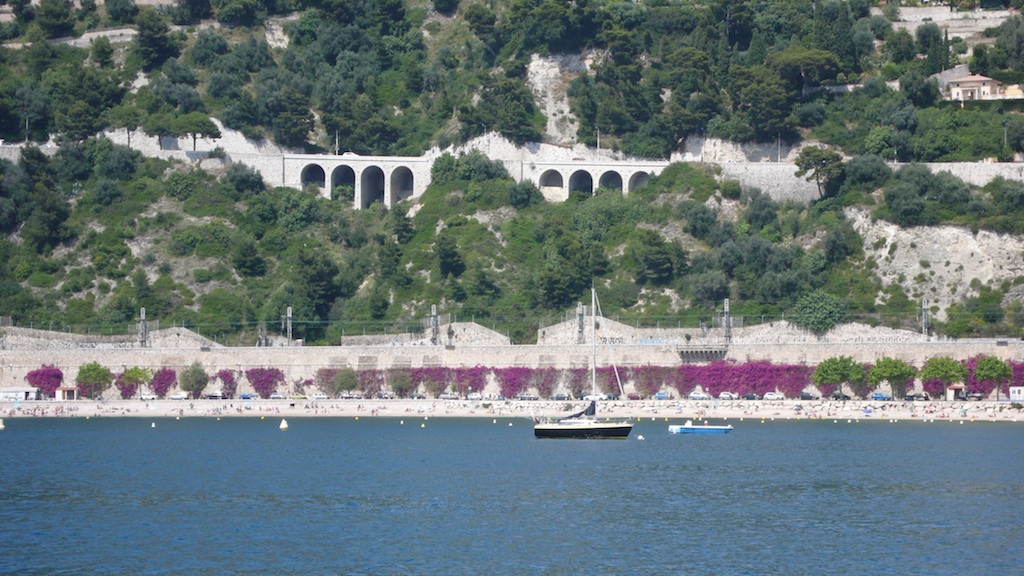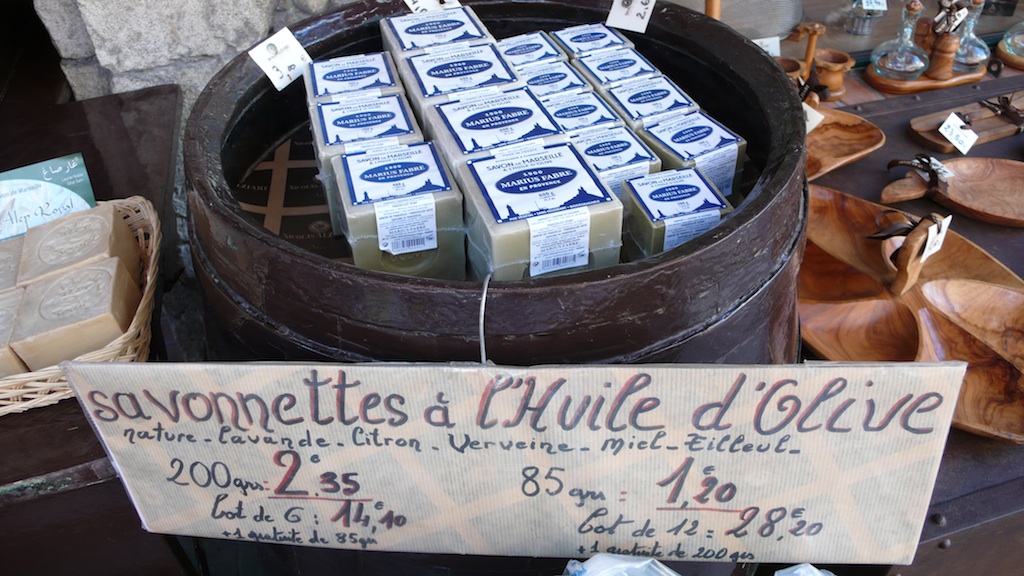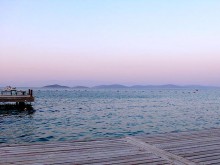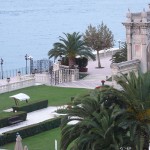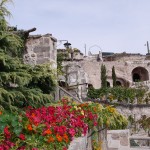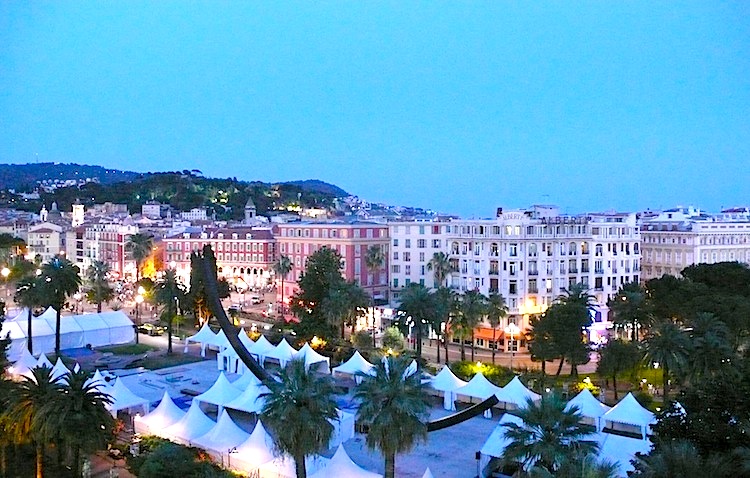 Nice and la Côte d’Azur: Ever since F. Scott and Zelda Fitzgerald landed in the south of France during the Roaring Twenties, the Côte d’Azur has been imbued with romantic visions of a glamorous life along the shores of the Mediterranean.
Nice and la Côte d’Azur: Ever since F. Scott and Zelda Fitzgerald landed in the south of France during the Roaring Twenties, the Côte d’Azur has been imbued with romantic visions of a glamorous life along the shores of the Mediterranean.Fitzgerald lived in Nice, at the Beau Rivage, and his novel “Tender is the Night” chronicles the extravagant lives of wealthy Americans, profligate heiresses, and Hollywood stars who drink and party with careless abandon. All of which sounds just like another summer on Fire Island – and the truth is, Nice has, in the past decade, become one of the most popular gay resorts in Europe.
The fifth largest city in France (with half the population under forty), Nice is the second most visited place in France (after Paris) with more than 4 million tourists annually making a beeline for the nearly five-mile long beach. As the car drove us in from the airport, along the Promenade des Anglais (so named for the 18th-century British aristocracy who wintered in Nice), it was nearly impossible not to gape at the cerulean water, a sea so azure that it looked like a film shot in Technicolor.
All along the Promenade, dotted with chic beach clubs evocatively named Opéra, Lido, Neptune, Florida, Miami Beach, and Bambou, a parade of young blonds, male and female, preen and pose, replicating the behavior of their predecessors who, for decades, have come to the south of France to escape the doldrums of North European weather. Not for nothing does the city carry the nickname “Nissa la Bella,” which is Niçard dialect for “This town’s got booty.”
With at least fifteen gay bars, three gay beaches, two major LGBT festivals, and as many rainbow flags as wave in le Marais in Paris, Nice has become the de facto gay resort of France. Each morning, in hotel breakfast rooms along the Promenade, the rhythms of European vacation rituals are replayed like “Monsieur Hulot’s Holiday,” with each couple making their entrance: an American mother and daughter in matching sundresses and sunglasses, a loudly laughing group of German boys, two large women stuffing croissants into their handbags for their afternoon sit along the beach.
At the Lido Beach Club, sitting along the pebbly shore surrounded by comely youth, it’s hard not to recall the scene from Thomas Mann’s “Death in Venice” when Aschenbach first glimpses Tadzio at the beach. The cabanas, the chaises, the cerulean blue water, the fluffy white towels – it’s a Côte d’Azur fantasy waiting to happen.
One of the world’s oldest settlements, Nice traces its roots to a site at the foot of Mont-Boron, more than 400,000 years old. To get a sense of Nice’s antiquity, head to Cimiez, above the Regina (the Belle Époque residence where Queen Victoria rested her heels), to see the ruins of an independent Roman city, Cemenelum, with its own thermal baths and arenas. Even then, Nice was attracting Italians who came for the temperate Mediterranean climate – and the light.
Henri Matisse, perhaps the artist most closely associated with Nice, famously arrived in 1917 in search of inspiration and clear air – and remained, often residing at the Regina, until his death in 1954. Housed in a renovated 17th-century Genoese villa amidst a centuries-old olive grove, the Musee Matisse is filled with Matisse’s testaments to the beauty of Nice and its fabled light.
At the end of the Cours Saleya, parallel to the rue des Ponchettes, is the ocher-colored house where Matisse first stayed – and where the weather was so uncooperative and inclement for nearly two weeks that Matisse resolved to return to Paris. On the morning of his departure, however, he threw open his Persian shutters to one of those magnificent Mediterranean mornings – the mesmerizing blue of the sea, the sun reflecting on the Sardinian red buildings – and his fate, and the future of art, was sealed.
Nice at night shimmers like an inspired and iridescent chimera, a vision from Fitzgerald’s imagination where indolent beauties mingle with oligarchs and artists. The city that you recall from the works of Fitzgerald and Chekhov, Cocteau and Berlioz, is still in evidence: in the pebbles underfoot along the beach and in the twinkling strand of lights dotting the surrounding mountains like a strand of jewels.
A seaside Shangri-La glittering in the evening mist, the city of Nice dazzles like a classic beauty, never more beautiful than in the twilight of her life.
Toulouse, “la Ville Rose”:
Nicknamed “the Pink City,” Toulouse might sound as if it’s a gay mecca – but the moniker refers primarily to the pink bricks of which nearly every building is built. Unlike Paris with its cold and dark stone facades, Toulouse radiates a kind of blush – and particularly in summer.
Located deep in the heart of southern France, halfway between the Mediterranean and the Atlantic Ocean, Toulouse is the fourth-largest city in France. Currently the home of Airbus Industries, as well as one of the oldest universities in the world, founded in 1229, Toulouse’s golden age occurred during the Renaissance, thanks to woad, a plant used in dyeing.
For more than 100 years, the pastel blue dye derived from the “isatis tinctoria” plant was in such demand that merchants established trade routes leading to and from Toulouse, thereby insuring that the city was at the center of the worldwide burgeoning pastel business. The resultant wealth flowing into Toulouse was substantial enough to build a large number of private mansions, some of which remain in private hands, while others are now the homes of public museums.
Toulouse was also home to a flourishing violet trade in the early 19th century, with more than 600 violet growers sending more half a million violet bouquets to Paris (and around the world) each year.
Pink bricks, baby blue pastel – and violets. Make of it what you will, but it seems to us as if there’s a great deal about Toulouse and its history that makes it ripe for discovery by the LGBT community.
Unlike its European neighbors Spain, Belgium, and the Netherlands, France has yet to legalize same-sex marriage – in spite of a recent poll that found that nearly 60% of French respondents are in favor of LGBT marriage.
Until then, until that day arrives, same-sex couples can form civil unions (which, admittedly, don’t allow for custody or inheritance rights) – and frolic happily on the Côte d’Azur and in “la Ville Rose.”
WHAT TO SEE:
NICE:
Museum of Modern and Contemporary Art: Niki de Saint Phalle’s massive sculpture “The Loch Ness Monster” (1993) commands the esplanade of Nice’s contemporary art museum and prepares the viewer for the breadth of modernism within its tetrapod structure. Built in 1990 of Carrara marble, the museum’s facade is undergoing renovation, but the rooftop garden with its view over Nice is stunning.
Inside, the permanent collection includes galleries devoted to Saint Phalle and her sculptor husband Jean Tinguely, as well as contemporary artists such as Arman, Ben, and Sol Lewitt.
Anyone who cares about French art and fashion immediately recognizes Yves Klein blue and the museum’s galleries devoted to Klein’s works are a reminder why Klein remains one of France’s most provocative and brilliant modern artists – nearly fifty years after his premature death.
LINK: Museum of Modern and Contemporary Art
Matisse Museum: High on the Cimiez hill, amidst a grove of centuries-old olive trees once tended by the Franciscan monks at the nearby monastery, stands a renovated 17th-century Genoese villa, which serves as a beacon for those who love Henri Matisse. The surrounding park has, for years, been the site of the Nice Jazz Festival, so there’s already a veneration for the area (allées are named for Miles Davis and other illustrious musicians) but there’s a palpable reverence upon entering the Matisse Museum. With paintings and sculptures, drawings and watercolors, and personal objects, the museum affords an intimate perspective into the life of one of France’s most beloved artists.
LINK: Matisse Museum
TOULOUSE:
Natural History Museum of Toulouse: Quite simply, this superlative, state-of-the-art museum is reason enough to book a trip to Toulouse – and if you are fortunate enough to have the museum director, Francis Duranthon, as your guide, then you’ll have a profoundly new respect and appreciation for the flora and fauna and history of the planet on which we live.
Duranthon, a star of French television and a world-renowned archeologist and paleontologist, is as enthusiastic as he is learned, and, therefore, the perfect leader for France’s second most popular museum (after the Louvre), which recently reopened after a decade-long, innovative renovation that fixes its vision on 21st-century technology and conservation.
Designed by Jean-Paul Viguier, the museum is an architectural wonder, successfully integrating the former convent building with a stunning curved glass facade flanking Maourine Park. Nestled against the glass edifice is the botanical garden – with a Michelin-starred restaurant on a wooden terrace. Think Giverny in Toulouse – and plan on spending the entire day. It’s worth every minute.
LINK: Natural History Museum of Toulouse
Les Abattoirs Modern Art Museum: Where once there was an abattoir, there is now a museum. Is there any better sign of a society’s progress? In this renovated 1831 slaughterhouse, more than 2,500 works chart the course of modern art since the second half of the twentieth century (one of history’s more gruesome) with one whole room given over to Picasso’s magnificent and majestic masterpiece, “La Dépouille du Minotaure en costume d’arlequin” (1936), which covers an entire museum wall. Located on the left bank of the Garonne, the museum is situated alongside the Raymond VI garden, which leads to the new bridge, the Passerelle Viguerie, thereby enabling a riverside promenade back into the city center.
LINK: Les Abattoirs Modern Art Museum
WHERE TO STAY:
NICE:
Holiday Inn Nice: Let’s be clear: this isn’t the Holiday Inn in which you stayed with your parents on that trip to Disney World when you were fourteen. Instead, you might think about the fact that Holiday Inn is owned by InterContinental Hotels Group, which runs the very high-end InterContinental hotels. And while there is still the green and white signage on the front of the buildling, there’s very little else that might bring back that adolescent trip to Orlando. Instead, if there is a hotel reference point, this four-star property on the Boulevard Victor Hugo is more like a W Hotel, albeit one that isn’t trying so hard to be chic and is, instead, quite comfortable with its own classic lines and breezy Côte d’Azur style.
Recently renovated in a style that’s an amalgam of Restoration Hardware and Room and Board, the public spaces are crisp and clean, with dark wood floors, while the breakfast room is a throwback to Laura Ashley’s French country chic. Executive rooms are nicely proportioned with comfy beds – and a pillow menu offers you at least six kinds of softness on which to lay your head.
Best of all, the staff at this establishment is warm and welcoming and extremely professional. And the hotel’s central location (right next door to the five-star Boscolo Exedra) makes the Holiday Inn Nice a perfect base camp for partaking of the many sensory pleasures of Nice.
LINK: Holiday Inn Nice
Boscolo Plaza Hotel: First of all, this four-star property located alongside the Jardin Albert 1er, right across from Promenade des Anglais, on the Bay of Angels is currently going through a major (and much-needed) renovation. Built in 1850, in the Belle Époque style, this is a gorgeous wedding cake of a building on the avenue de Verdun, home to Cartier, Louis Vuitton, and the like. Nonetheless, you might want to check your expectations at the door: the elevators are in the process of a slow upgrade and the musty hallways evoke images of Miss Havisham.
On the upside, the capacious, high-ceiling rooms are furnished minimally with a mélange of Italian contemporary pieces (in white, of course) and those on the front of the building have Juliet balconies overlooking the park and the Mediterranean. In the bathroom, indulgent toiletries by Etro make it easier to overlook signs of wear. Upstairs, the rooftop restaurant, La Terrasse, provides stunning vistas of Nice at night.
With a superb location and splendid views, the 182-room Boscolo Plaza Hotel has the potential to be as exemplary a property as its five-star Nizza sister, the Boscolo Exedra, on Boulevard Victor Hugo.
LINK: Boscolo Plaza Hotel
Hotel La Pérouse: Situated at the base of Castle Hill in a splendidly secluded setting, this four-star boutique hotel epitomizes the understated luxury that one associates with the Côte d’Azur. With spectacular views over the Bay of Angels and the Promenade des Anglais, the sixty recently-renovated rooms and suites are a model of decorous restraint.
A member of the Small Luxury Hotels of the World, Hotel la Pérouse is an escape into a Riviera fantasy, where the appearance of Cary Grant or George Clooney would be entirely in keeping with the hotel’s savoir-faire and good taste. While it’s only a short walk to the flower market and the Saleya walkway, it’s also possible that you’ll be quite content gazing at the Mediterranean from your balcony or the rooftop terrace – for hours on end.
LINK: Hotel La Pérouse
Le Windsor: Built in 1895 by an architect who studied with Gustav Eiffel, the Hotel Windsor has been run by the same family since 1942. A zen-like atmosphere pervades the hotel’s public spaces and garden, as does a resolute appreciation for artists and their works. Since the Seventies, various rooms have been given over to artistic collaborations with various well-known artists – and the Windsor now holds 22 rooms that are site-specific artworks. The lounge/lobby is the site of revolving installations, while the garden is a sanctuary filled with birdsong. One of the more relaxing and serene locales in a bustling city, the Hotel Windsor is as revivifying as a month at an artists’ colony.
LINK: Le Windsor
TOULOUSE:
Le Grand Balcon: Tucked into a corner of the Place du Capitole, this four-star, Thirties-inspired hotel reopened in 2008 with 47 rooms by Jean-Philippe Nuel designed around the theme of aviation as espoused by the life of France’s beloved author and aviation hero, Antoine de St. Exupéry. The resultant blend of streamlined Art Deco and Italian contemporary design creates an atmosphere evocative of the golden age of travel – when hotels, airplanes, and cruise ships were the realm of the wealthy and cosseted.
Inspired by the original Toulouse to Saint-Louis, Senegal air route, the decor includes quotations from St. Exupéry, while large video screens and black and white archival photos recall the glory days of Hollywood photographers such as Horst and Cecil Beaton. As for the comely staff, they look like a corps of “Little Princes” ready to swing from a star.
Initially, it’s all a bit overwhelming, akin to parachuting through clouds, but perhaps not surprisingly, you sink as quickly into the aviation fantasy as you would into a pillowy, white cloud. The rooms are like private apartments – or staterooms on a Zeppelin cruising through the night sky – complete with Nespresso machines, complimentary WiFi, and – get this – complimentary mini-bar. This is flying without the headache, replaced by a sense of lightweight joy.
LINK: Le Grand Balcon
WHERE TO EAT:
NICE:
Keisuke Matsushima: Soon after its opening in 2002, the 22-seat Kei’s Passion became one of the most popular Michelin-starred restaurants with some of the most innovative cuisine in Nice, thanks to the wunderkind chef, Keisuke Matsushima. Building upon his training at Vincennes, a legendary French restaurant in Shibuya, Japan, Matsushima utilized the bounty of southern France to explore his innate curiosity and respect for French cuisine – and it was only a question of time before his talents outgrew the small space and expanded into the new 50-seat Keisuke Matsushima.
Born and raised on the south island Kyusyu, Matsushima emigrated to France at the age of twenty, apprenticing at restaurants all over France before settling in Nice. Matsushima’s latest endeavor, Keisuke Matsushima opened in 2006 and was immediately decorated with a Michelin star for its culinary excellence.
With a profound respect for the local environment and the gustatory traditions of southern France, Matsushima also possesses a capacious culinary imagination, which results in sublime combinations of his native culture and that of his adopted country. Simply put, dining at Matsushima’s latest restaurant is the best of both worlds, a blending of Japan and France into a sublime dining experience that awakens the palate and the senses.
For those who care about taste in all of its manifestations, Keisuke Matsushima is its apogee.
LINK: Keisuke Matsushima
Le Patio: Located in the garden of Hotel La Pérouse, with its immense lemon trees, Le Patio is a sanctuary nestled away from the city’s hubbub – and a perfect setting for a clandestine tryst. And on the morning after, enjoy a sumptuous breakfast buffet beneath the shade of the lemon trees while listening to the songbirds – and contemplate how to linger longer on the Côte d’Azur.
LINK: Le Patio
Beau Rivage: A vision in white and blue, with teak chairs and floor, the restaurant at Plage du Beau Rivage feels like a lovely yacht anchored on the shore for the night. Situated on the Promenade des Anglais, Beau Rivage serves food that is as delicious as the setting – and to dine here as the sun sets is to better understand why Nice has, for so long, attracted the gifted and the glamorous. Order a second bottle of wine and watch the stars come out.
LINK: Beau Rivage
La Terrasse: This rooftop restaurant atop the Boscolo Plaza affords stunning views of the gorgeous garden, Jardin Albert 1er, as well as jaw-dropping vistas of the Mediterranean and the city skyline of Nice. Nearly as inspiring as the view is a menu focused on regional specialties, which utilizes local produce for a gazpacho served with a Parmesan crispy biscuit and, for dessert, a lemon tart with citrus sauce.
LINK: La Terrasse
TOULOUSE:
Le Moai: Situated on a wooden terrace overlooking the Botanical Garden, this gourmet, cafeteria-style restaurant is run by Gerard Garrigues, a Michelin-starred Toulouse chef, whose culinary creations perfectly complement the lush setting. To dine on indigenous French cuisine at le Moai while nestled against the Natural History Museum is to feel a renewed respect for the evolution of culinary traditions – and particularly those of southwestern France.
LINK: Le Moai
J’Go: As you approach J’Go on the Place Victor Hugo, right next door to the Victor Hugo market, you’re bound to see an animated crowd on the sidewalk, enjoying wine and beer at tables on the sidewalk. No matter how tempted you are to join them, walk into the restaurant and let the convivial maitre d’ take you upstairs to the rooftop terrace.
In the early evening, the setting is romantic and calm – while a more festive atmosphere takes over when the summer sun sets. The menu at J’Go is celebrates the cuisine of Gascogne and is a carnivore’s dream, featuring local charcuterie, including pigs’ feet, head cheese, and – quite possibly – tongue. Our heads started reeling at the sight of the gargantuan plate that fed the rest of the table who, it must be said, ate heartily and happily. For the herbivore, there’s local produce from the southwest of France, such as tomates noires de crincé (black tomatoes) with their slightly smoky, salty flavor.
J’Go has two additional outposts in Paris, both of which are as popular as the bistrot in Toulouse, thanks to an ambiance that commingles food with the sense of family. If you lived in the neighborhood, this would be your second home.
LINK: J’Go
Monsieur Georges: The Place Saint Georges in Toulouse is one of the more bustling arenas of public life in “La Ville Rose” – and Monsieur Georges is one of the more polished restaurants in a square filled with outdoor bistros and brasseries. The menu hews closely to what might be termed French comfort food with the usual suspects such as salade Caesar, parfait de foie gras, and a signature house terrine. Desserts include crème brûlée, as well as fromage blanc with honey or chestnuts. A stellar presentation elevates these entrees, plats, and desserts into a realm that makes you appreciate why French food has always been so comforting – and so delicious.
LINK: Monsieur Georges
GETTING THERE:
Air France: Even when flying economy, Air France makes a transatlantic flight seem more like a luxury than drudgery, thanks in part to their fleet of Airbus 380-800 (and Charles Lafitte 1834 Champagne…).
Since 2007, the Airbus 380 has generated raves from passengers, regardless of what class they’re flying – and Air France creates an atmosphere that is as elevating as the vintage wines they serve. Two-course dinners are nearly as tasty as the descriptions on the menus – and the demi-bottles of wines are perfect accompaniments to chocolates and cheeses. Blankets and pillows are clean and fresh – and the multi-lingual staff is as polished and professional as a Chanel suit. You might imagine feeling cramped on a plane with this capacity, but the A380-800 recycles air every three minutes – and there are four high-level air outlets (rather than the industry standard of two).
In short, this is one smooth flight – and a reminder of why France has always been at the forefront of aviation technology.
LINK: Air France
Rail Europe: One of the glories of Europe is its rail system, which, in most EU countries, runs as smoothly as a Swiss watch. France’s TGV (Train à Grande Vitesse, meaning “train of high speed”) is a particular delight – and to ride on the upper level while staring out at the passing vineyards and sunflower fields of southern France is to feel an immediate kinship with the many expatriates who’ve chosen to make Europe their home.
Recently, Rail Europe announced an LGBT promotion in four gay-friendly countries – Switzerland, Germany, Denmark, and the Netherlands – that enables you to save 10% when you journey beyond fabulous France.
LINK: Rail Europe
ADDITIONAL TOURISM INFO:
Click here for MRNY slideshow of Nice, France.
Click here for an invaluable and comprehensive 22-page guide about Gay Nice from Nice Tourisme.
Toulouse Weekends and Vacations
France Guide from French Tourism Board, A Tout France
Cote d’Azur boutique hotels from ParisMarais.com

